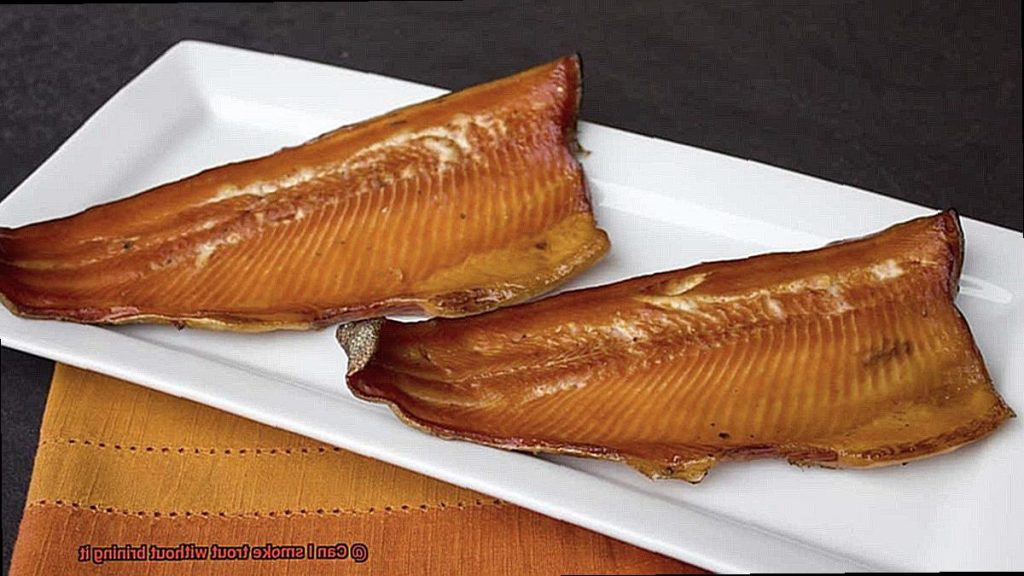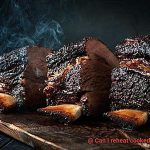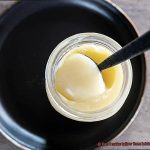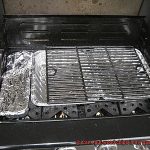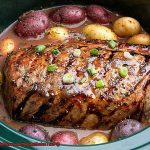Are you a die-hard fan of smoked trout but dread the laborious brining process that comes with it? Are you looking for a shortcut to relishing the smoky goodness of trout without going through the hassle of brining? If yes, then you’re in luck because smoking trout without brine is entirely possible.
In this blog post, we’ll delve into the nitty-gritty of smoking trout without brine and provide you with some tips on how to achieve that perfect smoky flavor. We’ll also weigh in on the pros and cons of brining trout so that you can determine whether it’s worth your time.
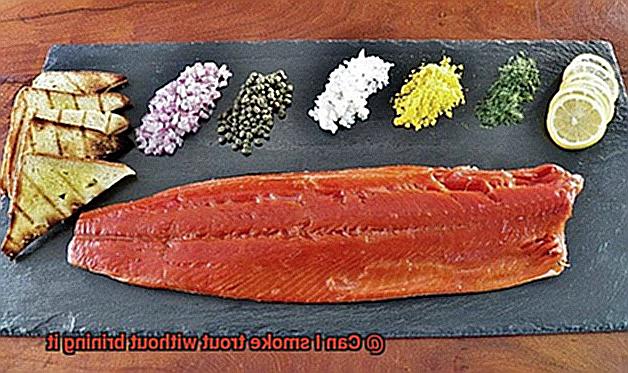
Smoking trout is an ancient culinary tradition that has stood the test of time. It’s a mouthwatering way to cook and preserve trout. However, brining is a process that can be both time-consuming and tedious. It involves soaking the fish in a solution made up of salt and water for several hours to enhance its flavor and retain moisture.
But what if you don’t have enough time or simply don’t want to go through all that trouble? Fret not because there are ways to smoke your trout without brining it. In fact, some people prefer to skip the whole brine affair altogether and use dry rubs or marinades instead.
So if you’re eager to learn how to smoke trout without using brine, then stick around. We’ll teach you how to achieve that perfect smoky flavor without breaking a sweat over lengthy brining processes.
Contents
What is Brining?
Brining can enhance the flavor and texture of meat, poultry, and fish before smoking or cooking. Brining involves soaking your food in a saltwater solution for several hours to add moisture and flavor. The result? A dish that will make your taste buds dance with joy.
When you brine your food, the solution helps to break down the protein in the meat, allowing it to retain more moisture during cooking. But that’s not all – the salt in the solution also infuses the food with flavors from any herbs, spices, or other ingredients added to the mix.
To make a basic brine at home, all you need is water, salt, and sugar. Mix these ingredients together until dissolved and add any additional flavorings such as herbs, spices, or citrus. The food is then submerged in the brine and refrigerated for anywhere from a few hours to overnight depending on the size and type of food.
While brining is a popular technique for smoking fish, it’s not always necessary. Some types of fish such as salmon or trout have enough natural oils to keep them moist during smoking without the need for brining. However, if you want to add additional flavor to your smoked trout or prevent it from becoming too dry during smoking, a brine can be a great way to achieve this.
When deciding whether or not to brine your trout before smoking it, there are a few factors to consider. If you’re using fresh trout that hasn’t been frozen, it may not be necessary to brine it since fresh fish tends to be more moist than frozen fish. Additionally, if you plan to smoke the trout for a short amount of time (30 minutes or less), then brining may not be necessary. However, if you plan to smoke the trout for longer periods (several hours), then brining can help prevent it from becoming too dry.
Advantages of Brining Trout
Brining is a process of soaking the fish in a solution of water, salt, and sugar before smoking or cooking. And let me tell you, it’s a game-changer for your smoked trout.
First and foremost, brining adds an explosion of flavor to your fish. The salt and sugar in the brine penetrate the meat, infusing it with a savory and sweet taste. This results in a mouthwatering and unforgettable smoked trout that will have your taste buds dancing with joy. But it doesn’t stop there – brining also helps the smoke penetrate the fish more easily, resulting in a richer and more complex flavor.
In addition to flavor, brining keeps your fish moist and tender during smoking. Brining causes the fish’s cells to absorb water, preventing the flesh from becoming dry and tough during smoking. It’s a sure-fire way to guarantee juicy and succulent smoked trout that will melt in your mouth. Plus, it prevents the fish from sticking to the smoker grates, making cleanup a breeze.
But wait, there’s more. Brining also reduces the risk of bacteria growth on your fish. The high salt concentration in the brine creates an environment that is less hospitable to bacteria, which can cause spoilage and foodborne illness. Additionally, brining helps preserve the color of your fish, preventing it from turning gray or brown during smoking.
Disadvantages of Brining Trout
Brining might be the way to go, but it’s important to be aware of the potential downsides.
Firstly, let’s talk about time. Brining can be a time-consuming process. Depending on the size of the fish and the strength of the brine, it can take anywhere from a few hours to overnight for the fish to fully absorb the flavors. This means planning ahead and allowing enough time for brining before smoking your trout. If you’re someone who likes to cook spontaneously, brining might not be the best option for you.
Another disadvantage of brining is that it can alter the texture of the fish. The proteins in the fish can break down, resulting in a softer and sometimes mushy texture. If you prefer a firmer texture in your smoked trout, then brining might not be your best bet.
In addition, brining can add extra salt to the fish. While salt is often used in brines to help preserve and flavor the fish, it can also make it too salty for some tastes. If you use too much salt in your brine or leave the fish in the brine for too long, it can result in an overly salty dish.
Lastly, cleaning up after brining can be messy. The brine solution can spill or splash onto countertops or floors, leaving a sticky residue that needs to be cleaned up promptly.
Overall, while brining can certainly enhance the flavor and texture of smoked trout, it may not be worth the extra time, effort, and potential downsides for some people. Luckily, there are alternative methods for smoking trout that do not require brining. Dry rubs or marinades can give you similar results without the hassle of brining.
Can Fresh Trout be Smoked Without Brining?
Before you begin, there are a few things to keep in mind.
First and foremost, brining your trout before smoking it can add a burst of flavor and moisture to the fish. However, if you’re in a rush or simply want to skip that step, you can still enjoy tasty smoked trout without it.
To smoke fresh trout without brining it, start by preheating your smoker to around 225-250 degrees Fahrenheit. You can use any type of wood chips or chunks that you prefer for smoking, but apple or cherry wood is a popular choice for smoking trout.
Next, rinse your fresh trout under cold water and pat it dry with paper towels. Then, season the fish with your favorite blend of spices. A simple mixture of salt, pepper, and garlic powder works well. You could also try something bolder like Cajun seasoning or lemon pepper.
Once your smoker is preheated and your trout is seasoned, place the fish directly on the smoker racks. Smoke the trout for around 1-2 hours or until it reaches an internal temperature of 145 degrees Fahrenheit. This cooking time may vary depending on the thickness of your fish.
It’s important to note that smoking fresh trout without brining it may result in a slightly drier texture compared to brined smoked trout. However, if you’re short on time or simply prefer not to use a brine, smoking fresh trout without brining is still a delicious option.
Should Frozen Trout be Brined Before Smoking?
After extensive research and consideration, I have found that there are valid arguments for both sides of this debate.
Firstly, let’s explore the benefits of brining. Brining is a popular technique for adding flavor and moisture to fish before smoking. This can be especially helpful in the case of frozen trout, which may have lost some of its natural moisture during the freezing process. Brining can also help to keep the fish tender and prevent it from drying out during smoking.
However, there are also some drawbacks to consider. Some experts argue that brining can actually mask the delicate flavor of the trout and make it too salty. Additionally, brining can add time to the overall smoking process, as you need to allow time for the brine to penetrate the fish.
If you do decide to brine your frozen trout before smoking it, there are a few things to keep in mind. Firstly, make sure to thaw the fish completely beforehand. This will ensure that the brine penetrates evenly throughout the fish. Secondly, be careful not to over-brine your fish. A good rule of thumb is to use a brine solution that is no more than 5% salt by weight. Any more than that can result in an overly salty finished product.
On the other hand, if you choose not to brine your frozen trout, you can still achieve a delicious smoked fish by seasoning it with your favorite spices and smoking it for 1-2 hours until it reaches an internal temperature of 145 degrees Fahrenheit. However, without brining, the texture may be slightly drier compared to brined smoked trout.
Ultimately, whether or not you should brine your frozen trout before smoking it is a personal preference. Some people love the added flavor and moisture that brining provides, while others prefer to let the natural flavor of the fish shine through. As with any cooking method, it’s all about finding what works best for you and your taste buds.
Factors to Consider When Deciding Whether or Not to Brine Your Trout
You may be wondering whether or not to brine it beforehand. Brining is the process of soaking fish in a saltwater solution before smoking it, which can enhance the flavor and texture of the fish. However, there are several factors to consider when deciding whether or not to brine your trout.
Firstly, consider the type of trout you are using. Different types of trout have varying levels of fat content, which affects how well they hold up during smoking. For example, if you’re using a leaner type of trout, such as rainbow trout, brining can help keep it moist and tender during smoking.
Secondly, personal preference for flavor is also important. Brining can infuse your fish with additional flavor, but some people may find it too salty or overpowering. If you prefer a more subtle taste, try smoking your trout without brining it first.
Thirdly, the size of your trout can also be a factor in your decision to brine or not. Larger fish may benefit from brining because they take longer to smoke and can dry out without the added moisture from the brine. Smaller fish may not need as much moisture and can be smoked without being brined.
Lastly, consider your level of experience with smoking fish. If you’re new to smoking fish, starting with a brined trout can ensure it turns out moist and flavorful. As you gain more experience, you can experiment with smoking unbrined fish and adjust your technique accordingly.
Different Methods for Smoking Trout Without Brining
Smoking trout is a beloved culinary tradition, but not everyone wants to go through the process of brining it. Luckily, there are alternative methods that can create an equally delicious smoked trout without the hassle of brining.
One technique is the dry rub method. This involves creating a blend of herbs, spices, and salt that is rubbed onto the fish before smoking. Not only does this enhance the flavor of the trout, but it also helps to keep it juicy throughout the smoking process. With an endless array of spice combinations available, you can tailor your dry rub to suit your taste buds.
Another option is the wet marinade method. This involves creating a liquid mixture of vinegar, oil, and spices that is used to coat the fish before smoking. The wet marinade adds moisture and flavor to the trout, resulting in a mouthwatering final product.
But why choose between dry rubs and wet marinades when you can have both? The combination method involves applying a dry rub to the fish and then coating it with a wet marinade before smoking. This provides a balance of flavor and ensures that the trout remains moist during smoking.
Tips for Smoking Trout Without Brining
If you’re looking for a way to reduce the sodium content of your smoked trout, or simply want to try a new technique, smoking trout without brining is definitely worth exploring. However, it’s important to keep in mind that this method requires a bit more attention and care than traditional brining. Here are some tips to help you smoke trout without brining and achieve mouthwatering results:
- Start with the freshest trout: When smoking trout without brining, it’s crucial to start with a high-quality fish. Look for bright, clear eyes and firm flesh. If the fish is slimy or smells fishy, it’s past its prime.
- Season generously: Since brining adds moisture and flavor to the fish, it’s important to season the trout well to make up for it. Try using a dry rub that complements the natural flavor of the fish, such as garlic, dill, lemon pepper, or paprika. Coat both sides of the fish evenly with the rub.
- Smoke low and slow: The key to smoking trout without brining is to smoke it low and slow. Preheat your smoker to 180-200°F. Place the seasoned trout on the smoker racks with enough space between each fillet so that smoke can circulate freely around them. Smoke the fish for approximately 2-3 hours, or until its internal temperature reaches around 145°F.
- Monitor your smoker temperature: Throughout the smoking process, keep an eye on your smoker temperature and adjust as needed to maintain a consistent heat level. This will ensure that the fish absorbs enough smoke flavor without drying out.
- Rest before serving: Once fully smoked, remove the trout from the smoker and let it rest for a few minutes before serving. This will allow the flavors to meld together and ensure that the fish is moist and tender.
whhVEiHD5m4″ >
Conclusion
In conclusion, smoking trout without brining it is not only possible, but it can also result in a delectable and succulent smoked fish. While brining can enhance the flavor and texture of the trout, it may not always be necessary for all types of fish or smoking techniques. When deciding whether or not to brine your trout, consider factors such as the size and type of fish, personal taste preferences, and level of experience with smoking.
If you’re looking for alternative methods to brining when smoking trout, there are several options available. Dry rubs, wet marinades, and combination methods that use both dry rubs and wet marinades are all viable choices. To achieve mouthwatering results when smoking trout without brining, start with fresh, high-quality fish and season generously with a blend of herbs and spices that complement the natural flavor of the fish. Smoke low and slow at a consistent temperature to ensure that the fish absorbs enough smoke flavor without drying out. Finally, let the smoked trout rest for a few minutes before serving to allow the flavors to meld together and ensure that the fish is moist and tender.
With these tips in mind, you can enjoy delicious smoked trout without going through the hassle of brining. By using quality ingredients and taking care during each step of the smoking process, you’ll be able to impress your guests with your expertly crafted smoked trout dish.

